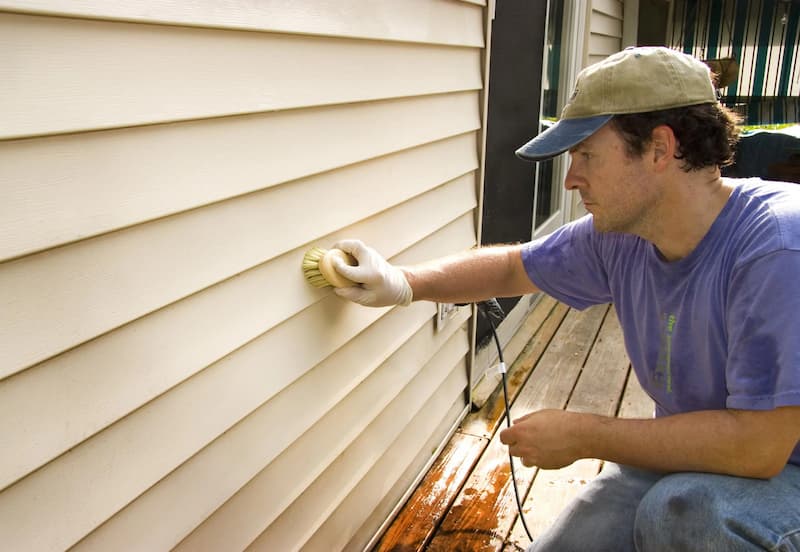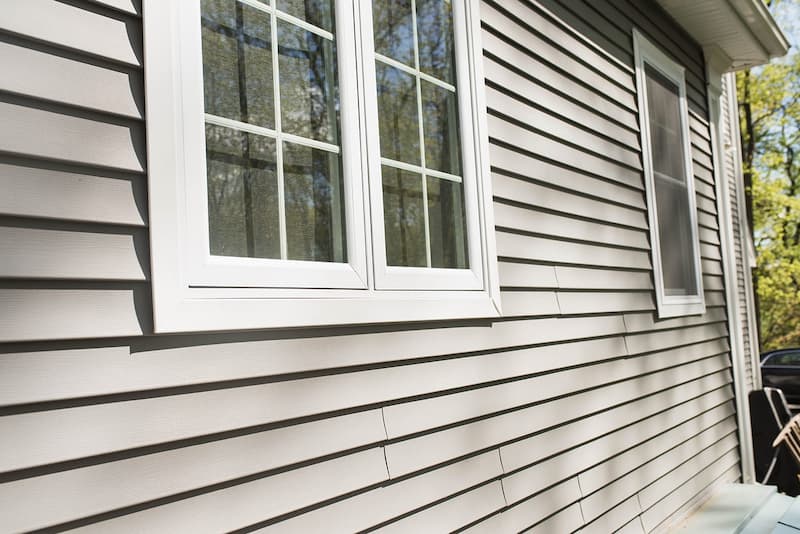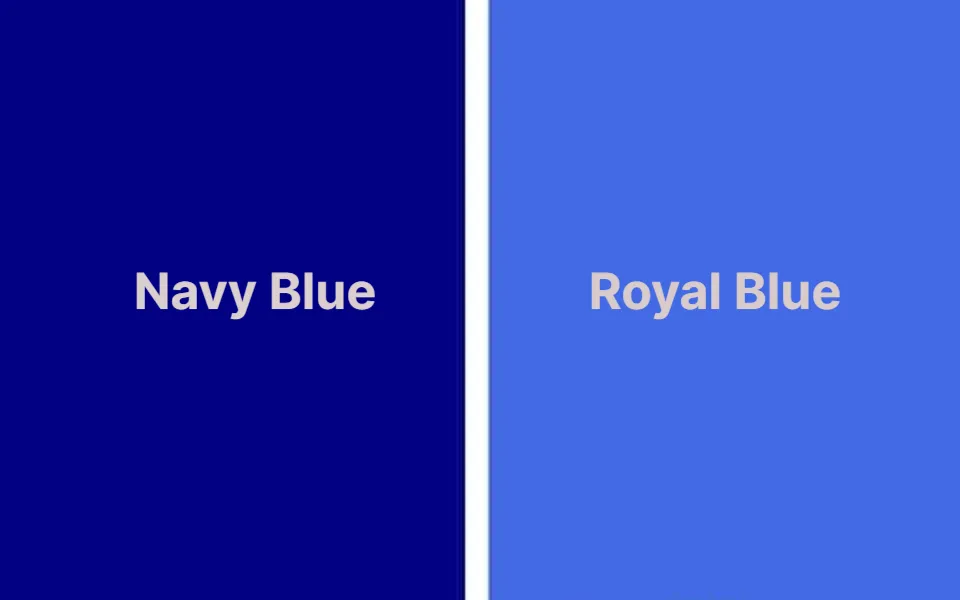Step to paint vinyl siding: choose an appropriate vinyl siding paint color, make sure the vinyl siding paint contains the right ingredients, check the weather forecast for painting day, prepare the vinyl surface, set up paint supplies & apply primer if necessary, and apply two coats of vinyl paint. I will show you specific details in the post, please read on.
Vinyl siding and vinyl shutters are commonly considered to be relatively maintenance-free, mainly because they does not have to be painted. A color that is more or less permanent is incorporated into vinyl when it is manufactured. However, due to varying rates of sun exposure, the color can deteriorate over time, frequently unevenly on different parts of the house. Furthermore, whether the siding is faded or not, if you didn’t choose the color, you might not like it.
The good news is that you can paint vinyl siding. The siding will only require as little upkeep as the paint itself, so keep that in mind. When painting vinyl siding, you must also adhere to a few guidelines and restrictions. Most importantly, make sure that painting the siding won’t nullify any remaining warranties. If the warranty allows painting, be sure to follow any guidelines provided by the siding manufacturer, including the kind and color of paint to use.
How to Paint Vinyl Siding?
Choose An Appropriate Vinyl Siding Paint Color
The first step might be the most challenging for some people. It can be challenging to know where to begin because there are so many colors. Fortunately, there are a few approaches to reduce the possibilities and feel assured about the exterior house paint color you select.
Choosing colors based on the design of the house can be helpful. Many paint manufacturers provide historically accurate collections of colors for particular house styles. For Queen Anne, Craftsman, Georgian, Suburban Modern, and other home styles, Sherwin-Williams, for instance, offers exterior color palettes.
Thinking about the home’s other exterior features is another way to choose the color of the siding. Look for hues that complement the hue of the roof and any brick or stone that makes up the facade. Find inspiration photos of homes that have the same fixed feature colors in order to help you visualize a new color for your home.
Other factors that may limit your options include the climate and your neighborhood. The color of the walls can have an effect, though the roof has a bigger influence on heat gain in a house. Less heat is gained when using cooler colors. Furthermore, many communities have laws dictating and restricting the colors of paint, and some homeowners might need to get the homeowners association’s permission before painting their home.
Last but not least, bear in mind that it will be simplest and most affordable for the homeowner if the new exterior paint color they select is the same color or a lighter hue than the current color. This is because siding painted in darker colors may prematurely warp and retain more heat while also posing a risk of other maintenance issues.
Make Sure the Vinyl Siding Paint Contains the Right Ingredients
Although it might be tempting, resist the urge to buy the cheapest and most accessible can of paint in an effort to save time and money. Vinyl siding requires a paint job that has a few specific characteristics in order to look good and last.
Acrylic and urethane resins are found in paint intended for vinyl siding. These components support the vinyl’s natural expansion and contraction while promoting the adhesion of the coating. To paint vinyl siding, you need to use an exterior-grade latex urethane paint.
Check the Weather Forecast for Painting Day
Consult the local weather forecast prior to beginning the painting of your vinyl siding outside. A moderate temperature, low relative humidity, and an overcast sky are the ideal weather conditions for exterior painting.
The paint may not apply properly if it is too hot, too sunny, or even too windy. Even though it may appear fine at first, paint applied on a hot, muggy, or windy day may adhere poorly as it dries and be more prone to cracking and flaking over time. Ensure that the weather forecast indicates clear skies for at least one day after the painting is finished.
Prepare the Vinyl Surface
The first step in obtaining a paint job of professional caliber is to thoroughly clean the surface, whether it be vinyl or another indoor or outdoor material. It is insufficient to simply rinse the siding of the house with running water from a garden hose.
The objective is to thoroughly clean the surface of all debris, mold, mildew, and chalky buildup. The following ingredients should be combined to create a cleaning solution for the best results.
- 1/3 cup laundry detergent
- 2/3 cup powdered household cleaner
- 1 quart liquid laundry bleach
- 1 gallon water
Apply the cleaning solution with a soft-bristled brush or cloth before painting vinyl siding, and make sure to thoroughly rinse off any leftover solution. Allow enough time for the siding to finish drying before moving on.
Suggested reading: One of the best ways to quickly improve the appearance and ambiance of a space where you probably spend a lot of time is by updating your kitchen cabinets. So, how much does it cost to paint kitchen cabinets?

Set Up Paint Supplies and Apply Primer, If Necessary
Set up a drop cloth to shield any plants or other surfaces from paint splatters before applying paint. If a ladder is required, place it on a flat, secure surface and ask a helper to hold it while you use it.
It’s time to start painting after the workspace has been prepared and the necessary materials have been assembled. Primer, however, might be required prior to applying the chosen color. To ensure that the final paint job is uniform and has good adhesion, primer is advised. If the original color hasn’t completely or partially faded, it might not be necessary. Primer will also be helpful if the vinyl is pitted or porous.
Apply Two Coats of Vinyl Paint
Apply your chosen paint with a roller or paint sprayer once the primer has dried, reserving a brush for the corners and edges. Apply paint evenly across the entire surface, being careful not to apply too much in any one area. As with the majority of other paint jobs, it is preferable to apply several thin coats as opposed to just one heavy one.
Let the paint dry after completing the first coat before beginning the second. Before the project can be said to be finished, the second coat must have had enough time (at least 24 hours) to completely dry.
Two coats are typically enough, but sometimes three are required. Examine the surface after the second coat of paint has completely dried to see if it needs a third or additional coat.
The Best Paint for Vinyl Siding
Paint that is 100 percent acrylic works best for vinyl siding. Compared to most other brands, it offers more color options.
Avoid using dark hues as a final coat unless the paint is safe for vinyl. A buildup of heat will cause vinyl siding to warp. Darker hues absorb heat, making them hotter and more likely to warp.
While one coat will provide adequate protection, we always advise two. The best durability and coverage are provided by this. As a result, you won’t need to paint your home as frequently, saving you time and money.
FAQs
Painting Vinyl Siding Pros and Cons
- Pro: Saves money. …
- The appearance of the house is enhanced. …
- Advantage: Strengthens the exterior of the house. …
- Pro: Increases the worth of the home. …
- Cons: Limited effects. …
- Potential for warranty voiding. …
- Possibility of siding damage. …
- Cons: Picking the incorrect hue could have disastrous results.
Is It a Bad Idea to Paint Vinyl Siding?
Vinyl siding can be painted if it’s in good shape, but older or damaged siding should be replaced. Because darker colors can lead to overheating, vinyl siding should only be painted a similar or lighter color. The best outcomes are obtained when using vinyl-safe exterior paint.
Can You Paint Vinyl Siding With a Brush?
To apply the paint, you can use a paint brush, a paint sprayer, a roller — or a combination. Before applying the second coat, wipe up any drips with a paintbrush and permit the first coat to completely dry.
Can You Paint Vinyl Siding Darker?
If vinyl siding is in good condition, it can be painted, but older or damaged siding should be replaced. Only paint vinyl siding a similar or lighter color as darker colors can cause overheating. The best outcomes are obtained when using vinyl-safe exterior paint.
Acrylic Paint for Vinyl Siding
100% acrylic paint works best with vinyl siding, as it’s lightweight and tightly clings to the vinyl. Overly thin paint will eventually flake off. This task can be completed with two coats, best applied as a spray. Remember that darker hues will eventually bubble as a result of absorbing heat from the sun.
Read about



